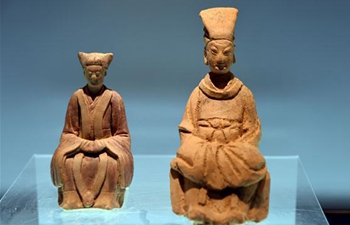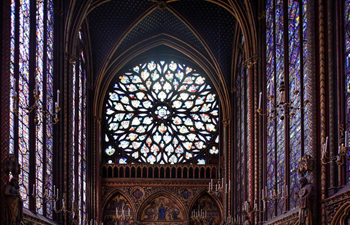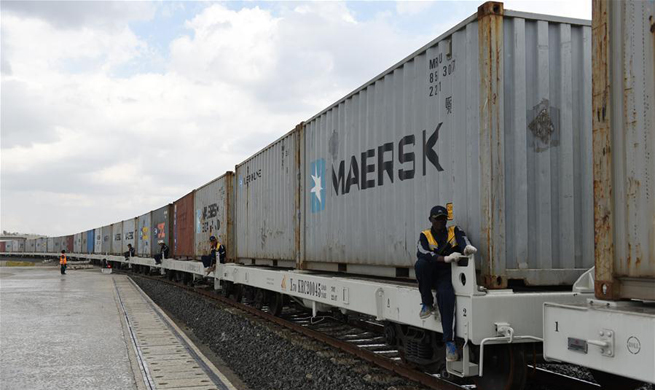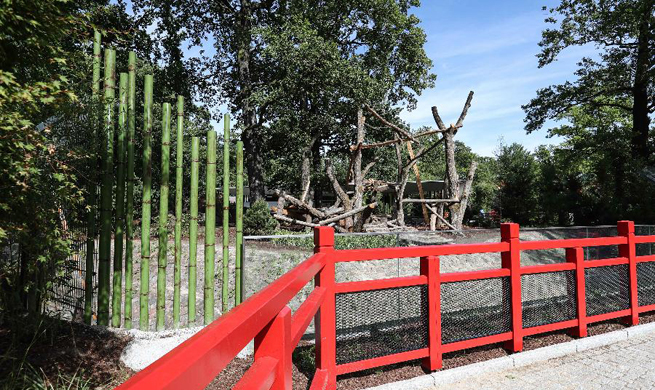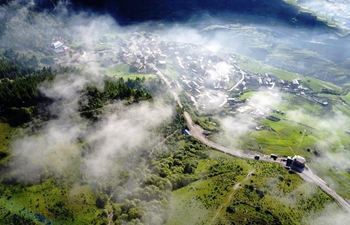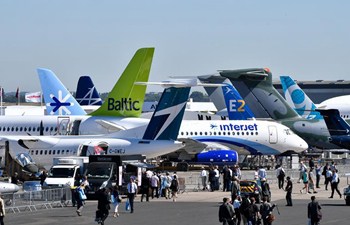BAGHDAD, June 22 (Xinhua) -- Iraqi Prime Minister Haider al-Abadi said on Thursday that Iraq will rebuild Mosul's historical al-Nuri mosque and its leaning minaret, after liberating the city from Islamic State (IS) militants "in a few days."
"We will move to reconstruct the archaeological sites that were destroyed by the terrorist Daesh (IS militant group) in al-Hadbaa (minaret in al-Nuri mosque), Nimrud and Hattra (archeological sites)," Abadi said at a press conference after his weekly cabinet meeting.
"The bombing of al-Nuri mosque and the Hadbaa minaret represents declaration of the end of Daesh organization, and we will rebuild them because it is human heritage not only for Iraqis," Abadi said.
Abadi also said "there are only a few areas left from Mosul, and its complete liberation is a matter of a few days."
Abadi's comments came a day after IS group bombed historical al-Nuri mosque in the center of the old city in the western side of Mosul, as Iraqi forces were pushing toward al-Nuri mosque and the surrounding areas, amid fierce house-to-house battles in some alleys near the mosque.
The mosque, built in 1172 A.D. with its famous leaning minaret, gave the city its nickname "al-Hadbaa" or "the hunchback." It has a symbolic value, as it was the place where IS leader Abu Bakr al-Baghdadi declared the cross-border "caliphate" in Iraq and Syria in his sole public appearance in July 2014.
A few hours after the bombing of the mosque, Abadi said "blowing up the al-Nuri mosque and the al-Hadba minaret is an official declaration of defeat by the Islamic State."
Meanwhile, Abadi revealed in Thursday's press conference that the loss caused by the destruction of Iraq's infrastructure by IS group in Iraqi cities reached to over 100 billion U.S. dollars.
During the past few weeks, the CTS forces, federal police and army soldiers made slow progress by the stiff resistance of IS militants and a large number of roadside bombs and booby-trapped buildings, in addition to IS snipers who took positions in the buildings of heavily-populated neighborhoods.
According to UN reports, some 100,000 civilians are still trapped in the IS-held areas in the old city center and the adjacent al-Shifaa neighborhood. The extremist group is using the civilians as human shields.
Iraqi forces, backed by international coalition, launched their final push on Sunday morning to drive out IS militants from al-Shifaa neighborhood and most of the densely-populated old city center in the western side of Mosul, locally known as the right bank of Tigris River.
Mosul, 400 km north of Iraq's capital Baghdad, has been under IS control since June 2014, when government forces abandoned their weapons and fled, enabling IS militants to take control of parts of Iraq's northern and western regions.




